
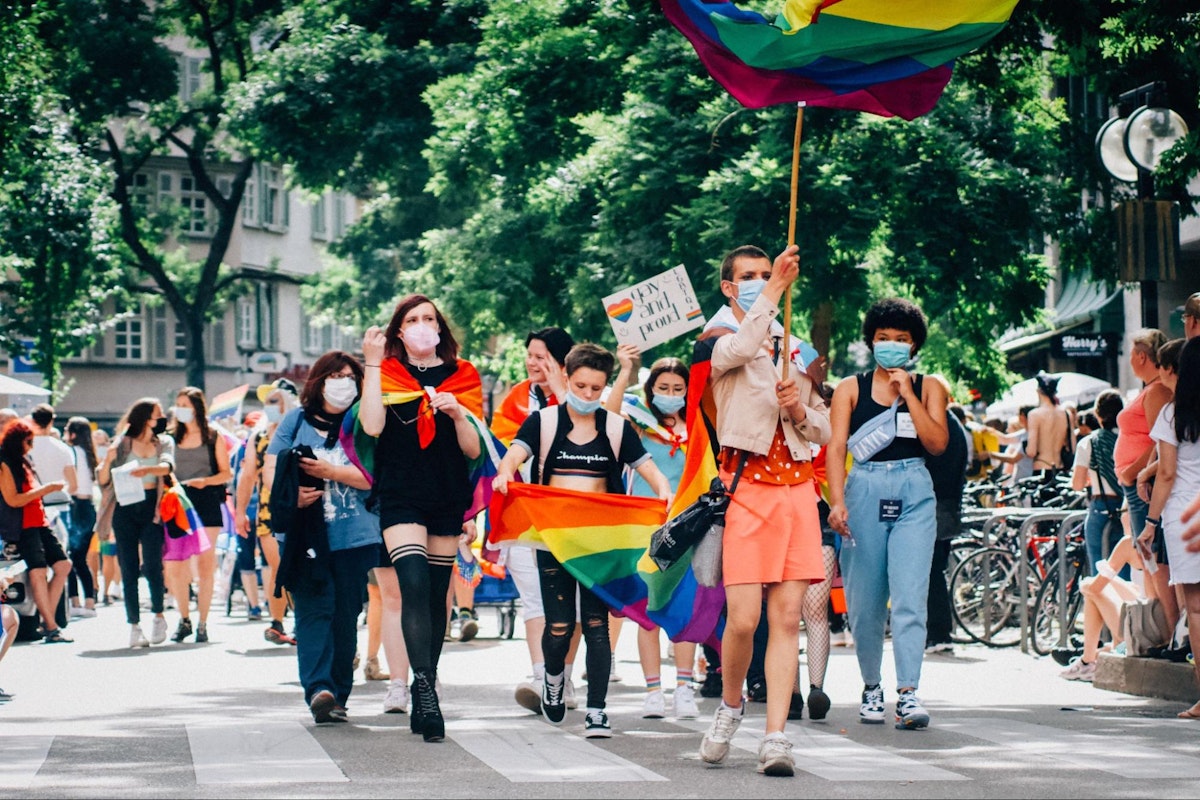
벚꽃, 일본에서는 사쿠라로 알려져 있는, 이 나라인 문화를 상징하는 아이코닉한 상징이다. 매 봄, 사쿠라가 만개하는 장관은 삶의 덧없지만 깊은 아름다움을 반향하는 놀라운 광경을 만들어낸다. 이 개념은 일본 사회의 깊은 구조에 공명하며, 그 구조는 LGBTQ+ 커뮤니티의 가시성과 수용성이 증가하면서 변화하고 있다. 사쿠라의 다양한 색상과 형태의 표현처럼, LGBTQ+ 커뮤니티도 아름다운 정체성과 경험의 다양성을 가져와 일본 사회의 중심에 '사쿠라 스펙트럼'을 그린다.
그러나 일본의 LGBTQ+ 커뮤니티를 위한 평등과 인식의 길은 사쿠라 꽃의 복잡한 패턴을 반영한다. 역사적 맥락, 변화하는 인식, 역동적인 LGBTQ+ 문화의 출현으로 특징지어진 이 여정은 일본 사회의 내러티브에서 LGBTQ+ 목소리를 표현할 공간을 만들어내는 데 중요한 역할을 해왔다. 이 탐구를 깊이 있게 진행하면 시련에서 성공에 이르는 다양한 경험의 풍경을 만나게 되어, 권리와 정당성을 위해 애쓰는 커뮤니티의 회복력 있는 정신을 엿볼 수 있다. 사쿠라가 삶의 덧없음 속에서 내재된 아름다움과 회복력을 상징하는 것처럼, 일본의 LGBTQ+ 커뮤니티 역시 변화하는 태도와 수용의 수준 속에서 다양성과 회복력을 보여준다. 그들의 이야기는 진화하는 인식과 수용의 풍경을 증언하는 생생한 사쿠라 스펙트럼을 그린다.
고대 및 봉건 일본에서는 성별과 성적 규범의 유동성이 현대적 관점에서 생각하는 것보다 더 두드러졌다. 이 이해의 중심은 '남색' 또는 '와카슈'의 개념으로, 이는 성인 남성과 청소년 소년 간의 사랑 관계를 지칭한다. 이런 관계는 낙인찍히지 않았으며, 대신 젊은 남성의 무예 교육과 문화적 세련미를 향상시키는 것으로 간주되었다. 이러한 동역학은 젊은 남성 배우가 남성과 여성의 역할을 모두 수행하는 전통 예술인 가부키 극장에서 자주 반영되었으며, 성별 유동성을 강조했다.
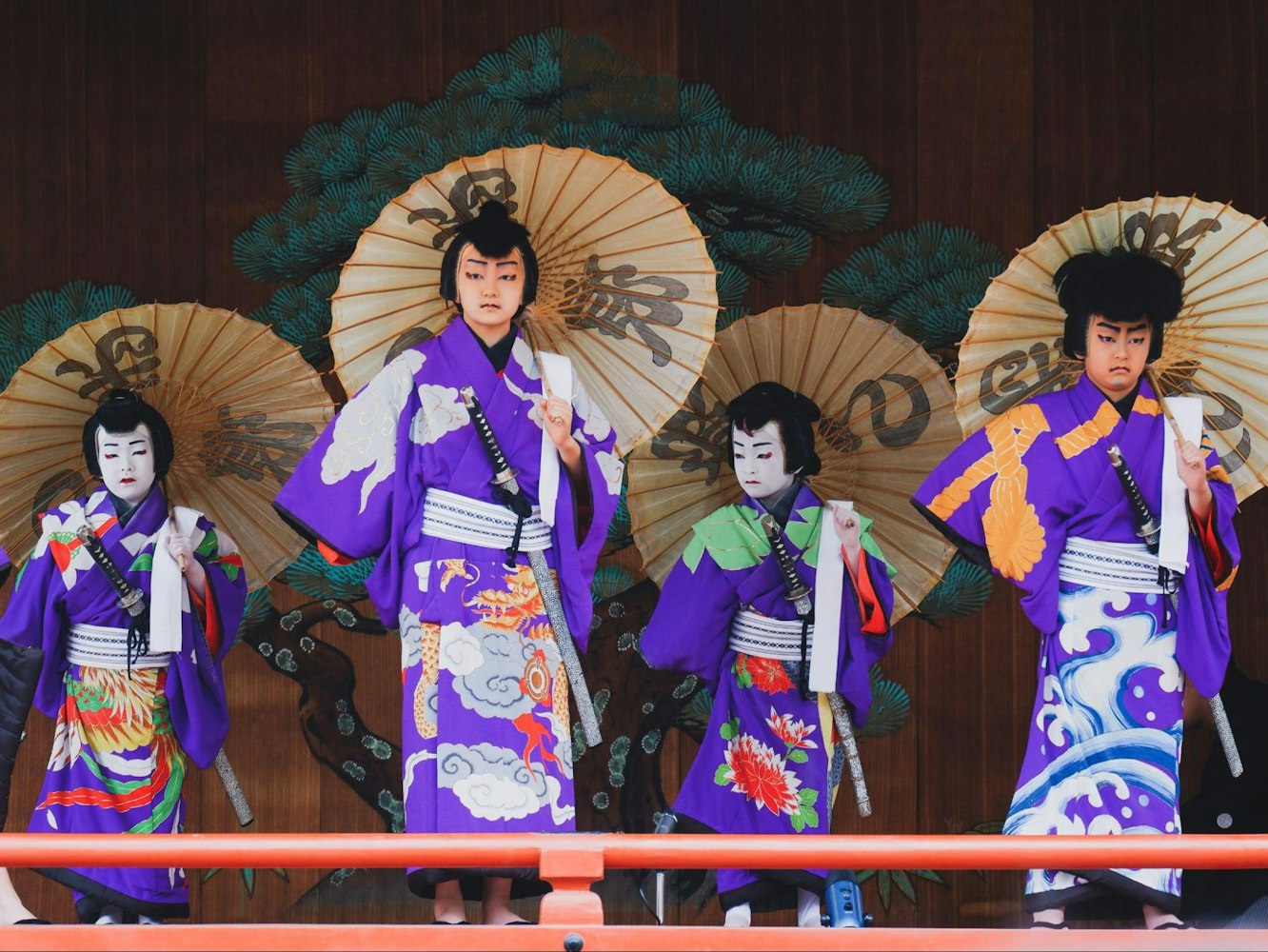
봉건 일본에서 성별 및 성적 다양성의 또 다른 중요한 측면은 가부키 극장에서 여성 역할을 수행한 '온나가타'이다. '온나가타'는 남성들이 여성성을 구현할 수 있는 수용된 성별 표현의 형태를 나타냈다. 게다가 역사적 기록은 특정 일본 사회 부문에서 오늘날의 레즈비언 관계와 유사한 여성 가정의 존재를 나타낸다. 이러한 관계와 역할은 현대 LGBTQ+ 정체성의 이해에 정확히 맞아 떨어지지는 않지만, 그렇더라도 전근대 일본에서 다양한 성별 및 성적 표현의 존재를 암시한다.
19세기 후반 메이지 유신과 서구의 유입으로 일본의 성적 및 성별 인식은 변화하기 시작했다. 서구는 비윤리적이거나 병리적이라 여겨지는 동성애 및 다른 비이분법적 성 정체성에 대한 빅토리아 도덕 규범과 유대-기독교적 가치를 가져왔다. 이에 따라 1880년 일본은 나폴레옹 법전을 도입하게 되었으며, 이는 동성애를 범죄화하지는 않았지만 사회적 낙인을 가져왔다. 20세기 중반에는 동성애를 병리화하는 서구의 정신과 모델이 일본에도 영향을 미치기 시작했다.
과거 성별 유동성의 수용과 대조적으로, 이분법적 성별 시스템에 대한 서구 개념이 지배하게 되었다. LGBTQ+ 커뮤니티의 수용은 금기의 주제가 되었고 종종 무시되었다. 이 시기는 LGBTQ+ 정체성이 억압되고 일본 사회의 어둠 속으로 강제로 몰아넣힌 태도의 변화를 보았다.
최근 수십 년 간 일본에서는 LGBTQ+ 커뮤니티에 대한 태도가 점진적이지만 중요한 변화가 있어왔다. 2018년 일본의 유명 광고 회사인 덴츠에서 실시한 조사에 따르면, 20세에서 59세 사이의 거의 70%가 LGBTQ+ 정체성을 가진 사람을 아는 것으로 나타났으며, 이는 이전 해들에 비해 눈에 띄는 증가를 보였다. 또한 78.4%는 LGBTQ+ 사람들이 자신의 생활에 존재하는 것에 대해 편안하게 느끼고 있다고 응답했다.
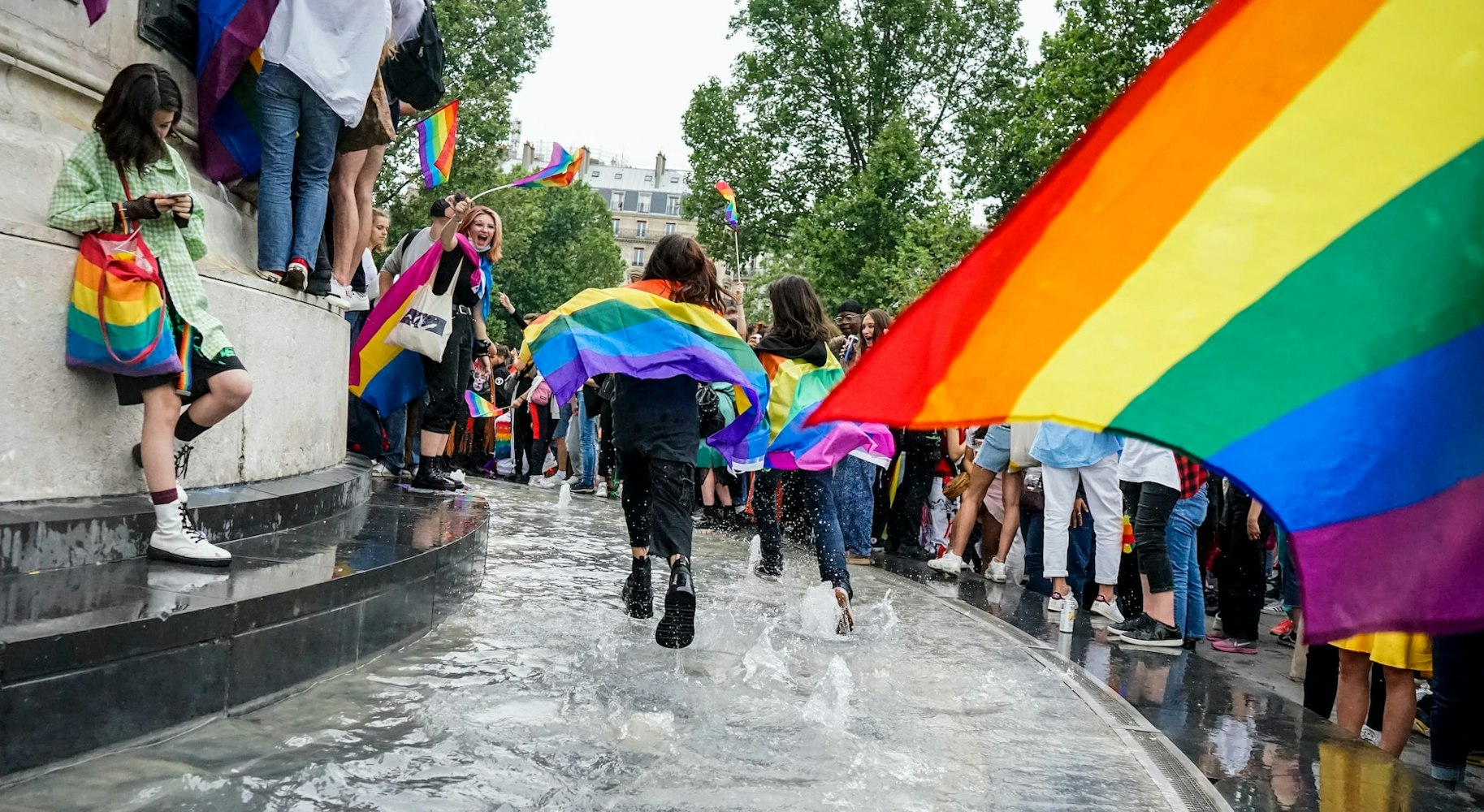
이미지 출처: 노르부 기야충
법적 진전도 이루어졌다. 2009년 도쿄 시부야 구는 동성 파트너십을 인정하는 첫 번째 지역이 되었으며, 다른 자치구들도 이에 따라갔다. 비록 일본에서 성전환 혼인은 아직 국가적 차원에서 인정받지 못하고 있지만, 2020년 일본 LGBT 연구소의 조사에 따르면 응답자의 절반 이상이 동성 결혼을 지지했다는 결과가 나타났다.
일본 미디어, 특히 애니메이션, 만화 및 드라마는 LGBTQ+ 커뮤니티의 표현과 가시성에 심오한 영향을 미쳤다. 1970년대 만화 '베르사이유의 장미'와 같이 최초의 안드로지너스 캐릭터 중 하나를 특징으로 한 초기 묘사부터, 긍정적인 동성 관계를 묘사한 애니메이션 '유리 온 아이스'와 같은 현대 작품에 이르기까지, 그 영향은 상당했다. '소년 사랑'(BL) 및 '소녀 사랑'(GL)이라는 장르는 동성 간의 관계를 보여주는 데 중점을 두며, 대중성을 얻고 있다. 이들 장르는 종종 동성관계의 이상적 묘사로 비판받지만, 그러한 관계를 정상화하는 데 있어 문화적 영향은 부인할 수 없다.
더욱이, 일본 드라마 산업 또한 LGBTQ+ 주제를 더 개방적으로 수용하기 시작했다. 트랜스젠더 청소년에 관한 드라마 시리즈 '소녀로서의 삶'은 이 주제를 신중하고 사려 깊게 다뤘다는 찬사를 받았다. '방황하는 아들'과 같은 애니메이션 시리즈는 트랜스젠더 경험에 대해서도 조명을 비추었다. 대중 미디어에서 LGBTQ+ 주제와 캐릭터의 증가하는 표현은 사회적 태도의 변화를 나타내며, 보다 다양하고 포용적인 문화 서사를 위한 길을 닦고 있다.
최근 몇 년간 일본 사회에서 LGBTQ+ 주제에 대한 개방성이 높아지고 있다. 이러한 변화는 매년 열리는 도쿄 레인보우 프라이드와 같은 LGBTQ+ 커뮤니티를 위한 이벤트와 공간의 증가에서 나타난다. 도쿄레인보우 프라이드 - 일본 최대의 LGBTQ+ 이벤트. 이러한 이벤트는 축하의 장뿐만 아니라 옹호와 인식 제고의 장을 제공한다.
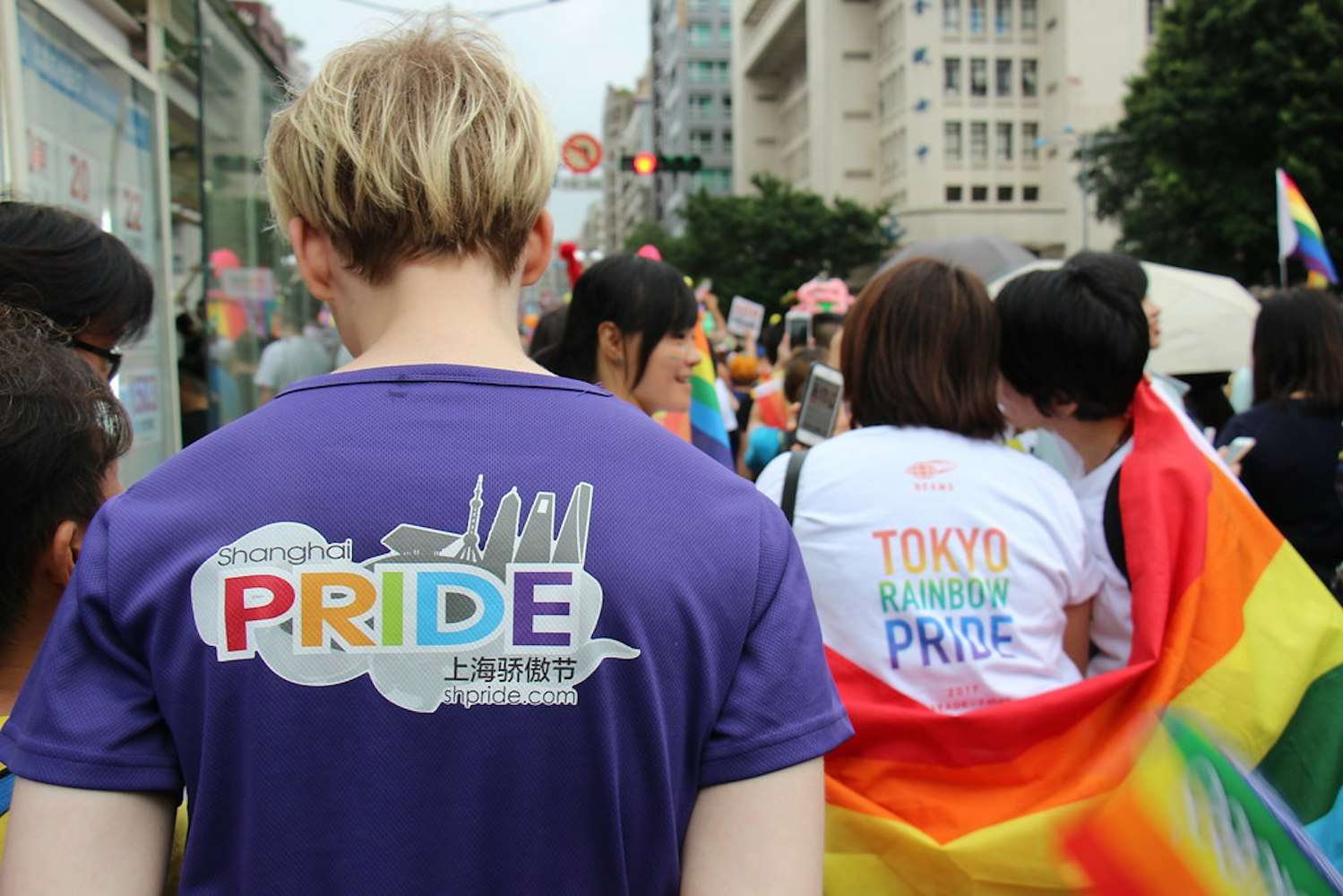
이미지 출처: 아이러니 포이즈닝
기업들도 변화를 받아들이고 있다. 파나소닉과 소니와 같은 기업들은 동성 파트너십을 인정하는 정책을 시행하고 있다. 학교들은 또한 LGBTQ+ 포괄적 교육의 필요성을 인식하고 있다. 2017년 교육부는 일본의 학교들이 LGBTQ+ 학생들을 더 잘 지원할 것을 촉구하는 지침을 발표했다. 도전에도 불구하고, 이러한 발전은 LGBTQ+ 주제와 그들의 권리에 대한 사회적 수용의 증가를 반영하고 있다.
일본에는 LGBTQ+ 커뮤니티의 가시성과 수용을 높이는 데 크게 기여한 여러 저명한 LGBTQ+ 인물들이 있다. 일본의 최초의 공개 성적 정체성을 가진 정치인 중 한 명인 이시카와 다이가는 LGBTQ+ 권리 및 정책 변화를 위해 많은 영향을 끼쳐왔다. 쇼 비즈니스 세계에서 트랜스젠더 TV 인물인 아이 하루나와 동성애자로 알려진 배우 이코는 LGBTQ+ 논의를 주류 미디어로 이끌어 오는 데 중요한 역할을 해왔다.
스포츠 분야에서는 LGBTQ+ 옹호자인 트랜스젠더 전 럭비 선수인 스기야마 후미노가 2021 도쿄 올림픽의 프라이드 하우스를 공동 운영했으며, 이는 경기와 관련된 최초의 영구적인 LGBTQ+ 센터이다. 이러한 인물들의 존재와 인기들은 일본 사회의 다양한 분야에서 LGBTQ+ 개인에 대한 수용의 증가를 나타내며, 사쿠라 스펙트럼의 생생한 그림을 그린다.
일본의 프라이드 이벤트는 LGBTQ+ 커뮤니티에 대한 국가의 진화하는 이해와 수용을 생생하게 보여준다. 이러한 이벤트는 사포로에서오키나와까지 열리며 각기 독특한 지역적 색깔을 지닌다. 하지만 그중에서도 도쿄 레인보우 프라이드가 가장 중요하다. 매년 수천 명의 참가자들이 시부야와 하라주쿠의 거리를 행진하며, 다채로운 깃발을 높이 흔들며 LGBTQ+ 권리에 대한 연대, 축하와 옹호를 상징한다.
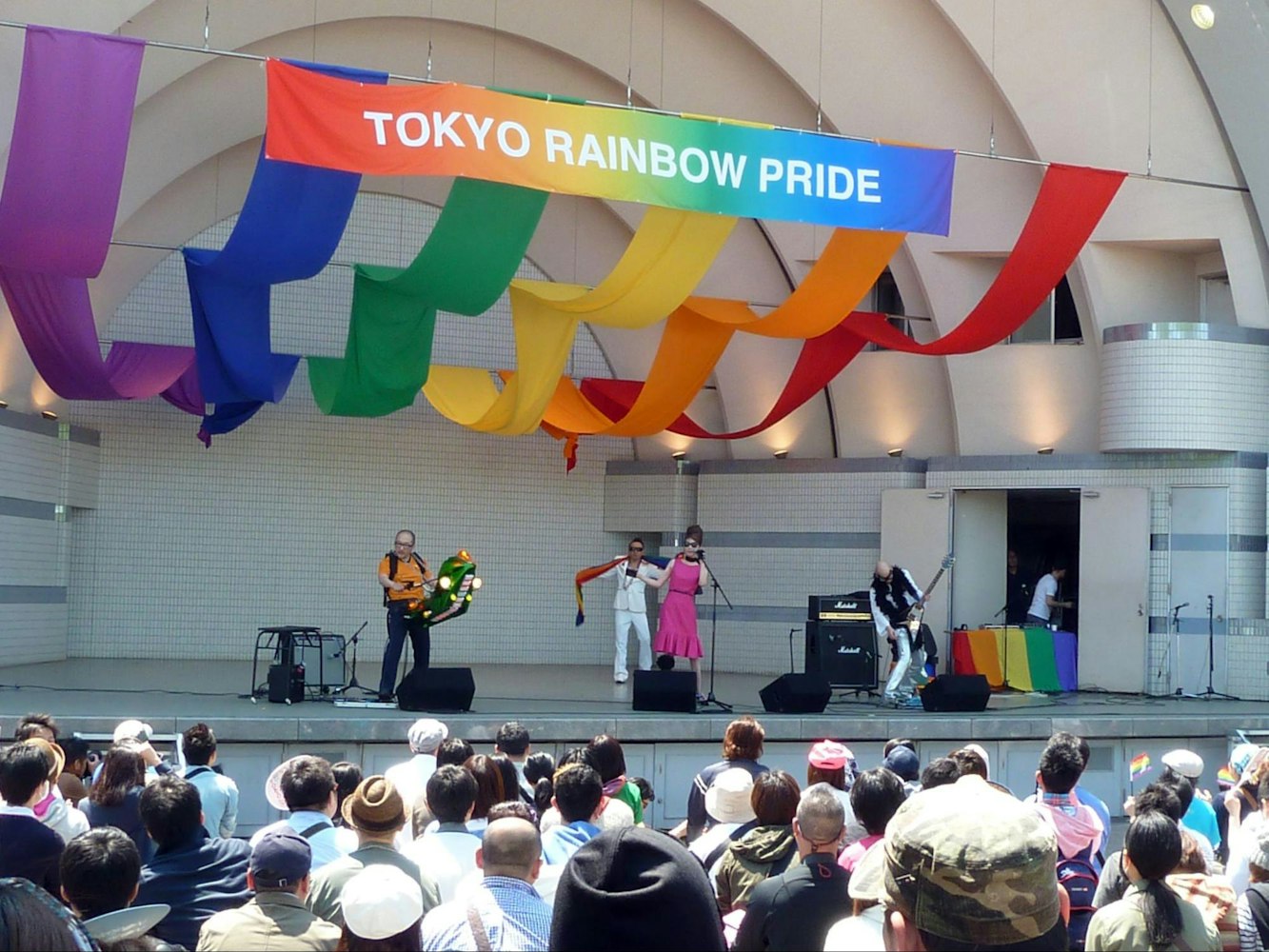
이미지 출처: 위키미디어 커먼스
도쿄 레인보우 프라이드는 단순한 행진 이상의 의미가 있다. 수많은 이벤트가 특징인 일주일 간의 축제로, 라이브 공연, 전시 및 강연을 포함하여 도쿄를 다양성과 수용의 빛나는 전시로 변모시킨다. 매년 이 이벤트는 참가자 수가 증가하고 있으며, 일본의 LGBTQ+ 커뮤니티에 대한 지지의 증가를 반영한다. 2019년 도쿄 레인보우 프라이드에는 200,000명 이상의 참가자가 모였으며, 이러한 축하가 LGBTQ+ 커뮤니티의 희망의 등대이자 진전을 증명하는 역할을 한다.
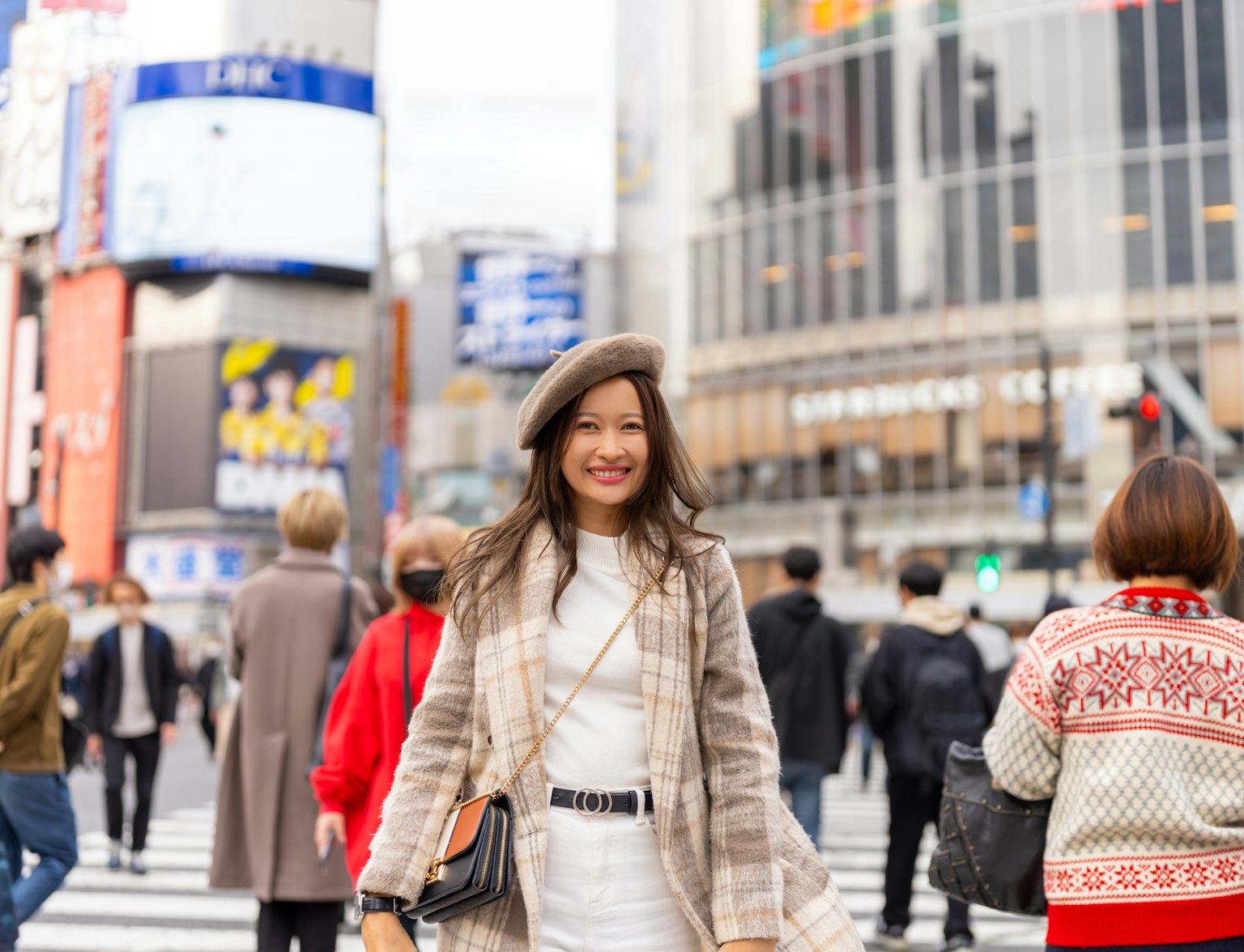
걷기 투어로 시부야와 하라주쿠를 탐험하세요.
신주쿠 니초메, 간단히 니초메로 불리는 이곳은 세계에서 가장 조밀한 게이 디스트릭트로 유명하다. 도쿄 신주쿠 구에 위치한 니초메는 일본의 LGBTQ+ 문화의 허브이며 300개 이상의 게이 바, 클럽, 서점 및 카페가 자리잡고 있다. 이는 LGBTQ+ 커뮤니티의 구성원들이 자유롭게 자신을 표현하고 소속감을 찾을 수 있는 장소다.
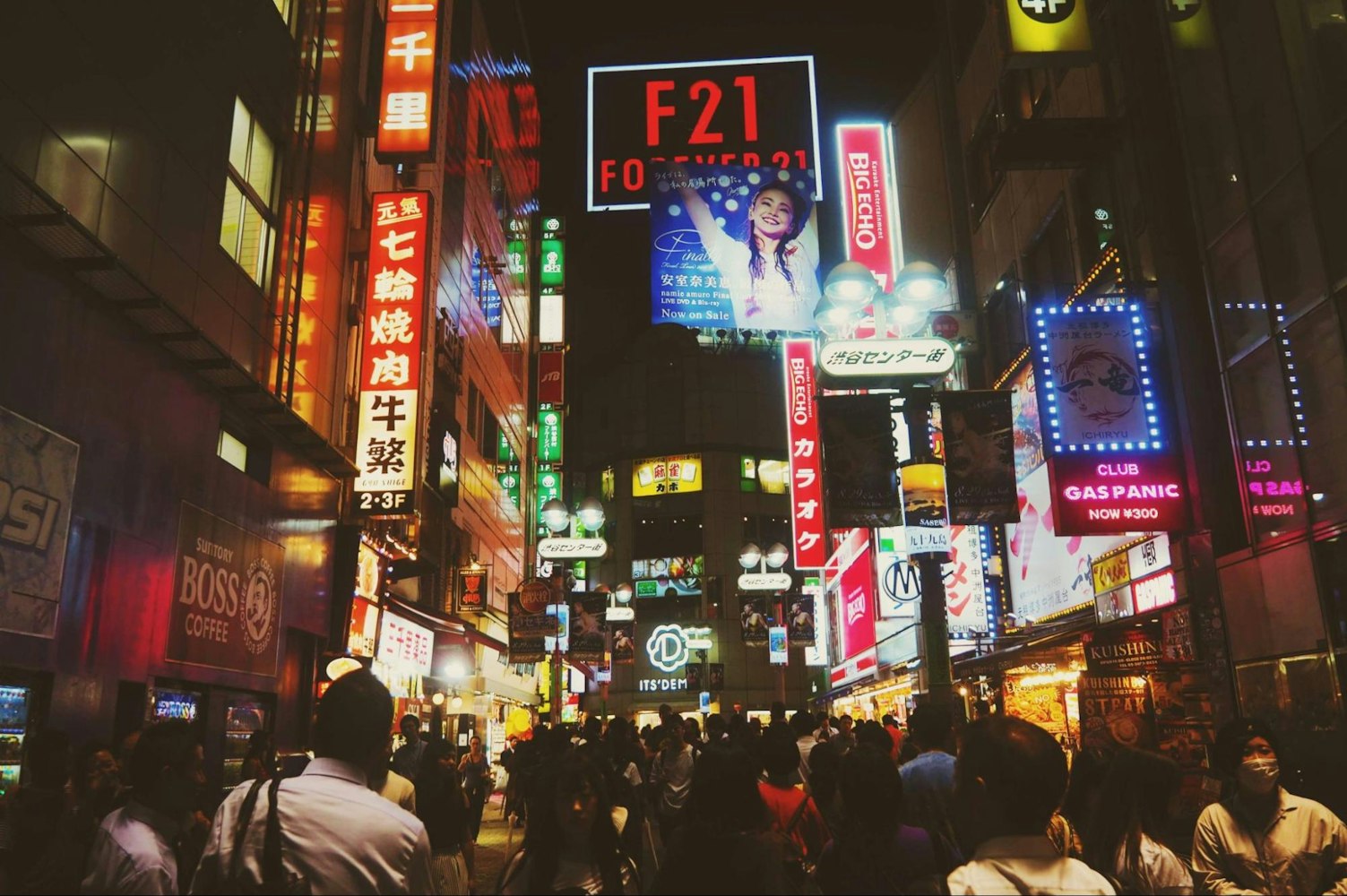
니초메는 단순한 나Nightlife 지구에 그치지 않는다. 역사적 중요성과 커뮤니티의 일원이 되기도 한다. 1990년대 일본의 성적 소수자 권리 운동의 출발지였으며 LGBTQ+ 운동의 초점이 되고 있다. 이 지역은 매년 도쿄 레인보우 프라이드를 주최하고 다른 LGBTQ+ 이벤트로도 유명하여 일본의 LGBTQ+ 문화와 축하의 초석이 되고 있다.
도쿄 레인보우 프라이드와 니초메의 활기찬 나Nightlife 외에도 일본은 수많은 다른 LGBTQ+ 축하 및 이벤트를 개최하고 있다. 레인보우 릴 도쿄는 1992년부터 LGBTQ+representation in cinema를 촉진하는데 기여한 이벤트 중 하나이다. 간사이 레인보우 페스타는 오사카에서 수천 명의 참가자를 끌어모으는 주요 이벤트 다. 삿포로 레인보우 프라이드는 홋카이도의 차가운 북부 지역에서의 축하를 제공한다.또한 일본은 국제 동성애 혐오, 트랜스포비아 및 바이포비아 반대의 날(IDAHOT)도 다양한 활동과 이벤트로 축하한다. 이러한 수많은 이벤트는 영화제에서 프라이드 퍼레이드에 이르기까지 일본 LGBTQ+ 커뮤니티의 인식과 축하가 점점 증가하고 있음을 강조하며, 다양하고 풍부한 사쿠라 스펙트럼을 더욱 풍부하게 만든다.'사쿠라 스펙트럼'의 의미
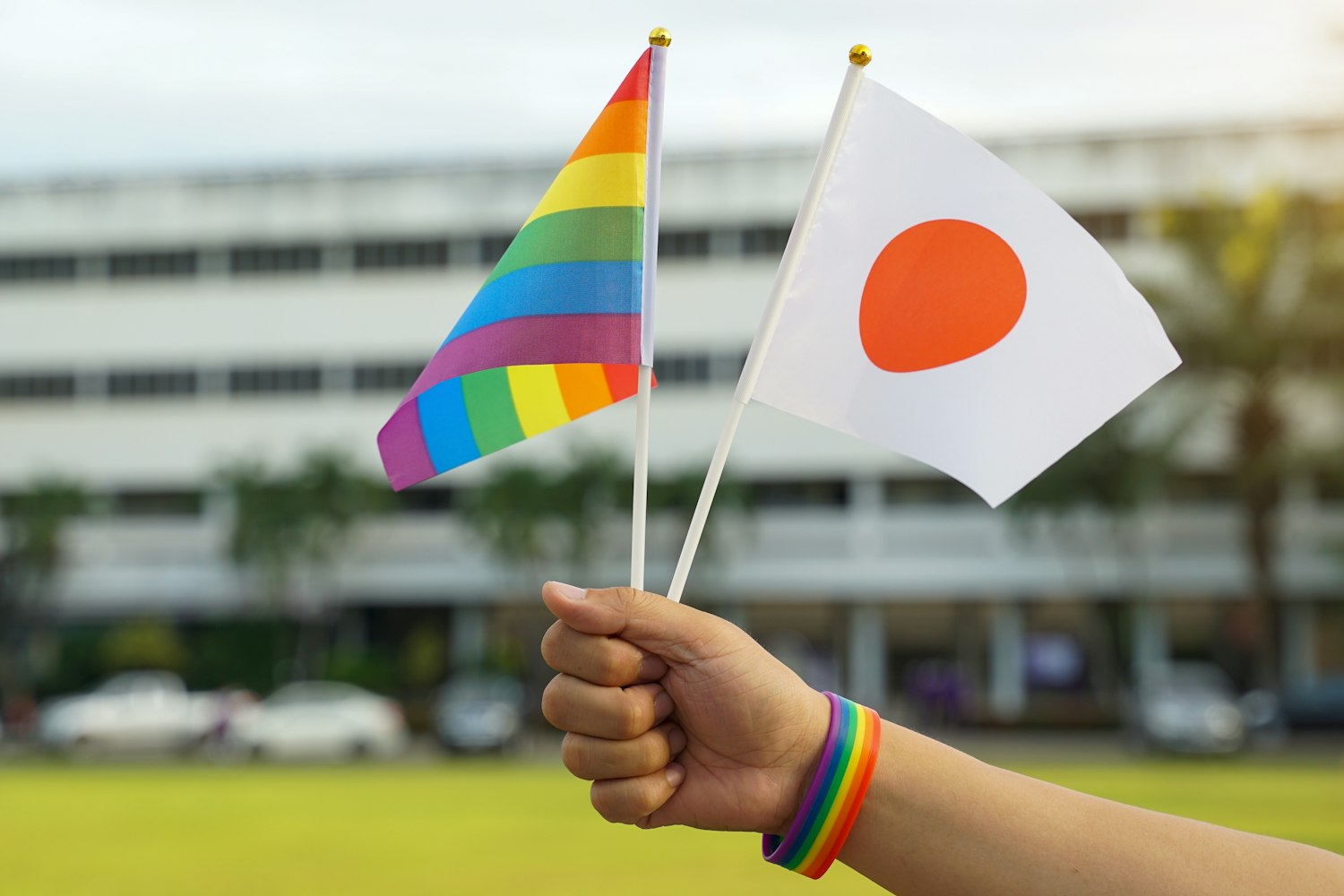
'사쿠라 스펙트럼'은 일본의 LGBTQ+ 커뮤니티의 다양성과 아름다움을 아름답게 담고 있는 상징적 메시지이다. 사쿠라 나무가 만개하면 다양한 색을 나타내듯이, '사쿠라 스펙트럼'은 LGBTQ+ 커뮤니티 내의 다양한 정체성과 경험을 나타낸다. 스펙트럼의 각 색상은 독특한 정체성을 나타내지만, 모두 조화를 이루어 벚꽃 나무가 만개하는 놀라운 장면을 만들어낸다.
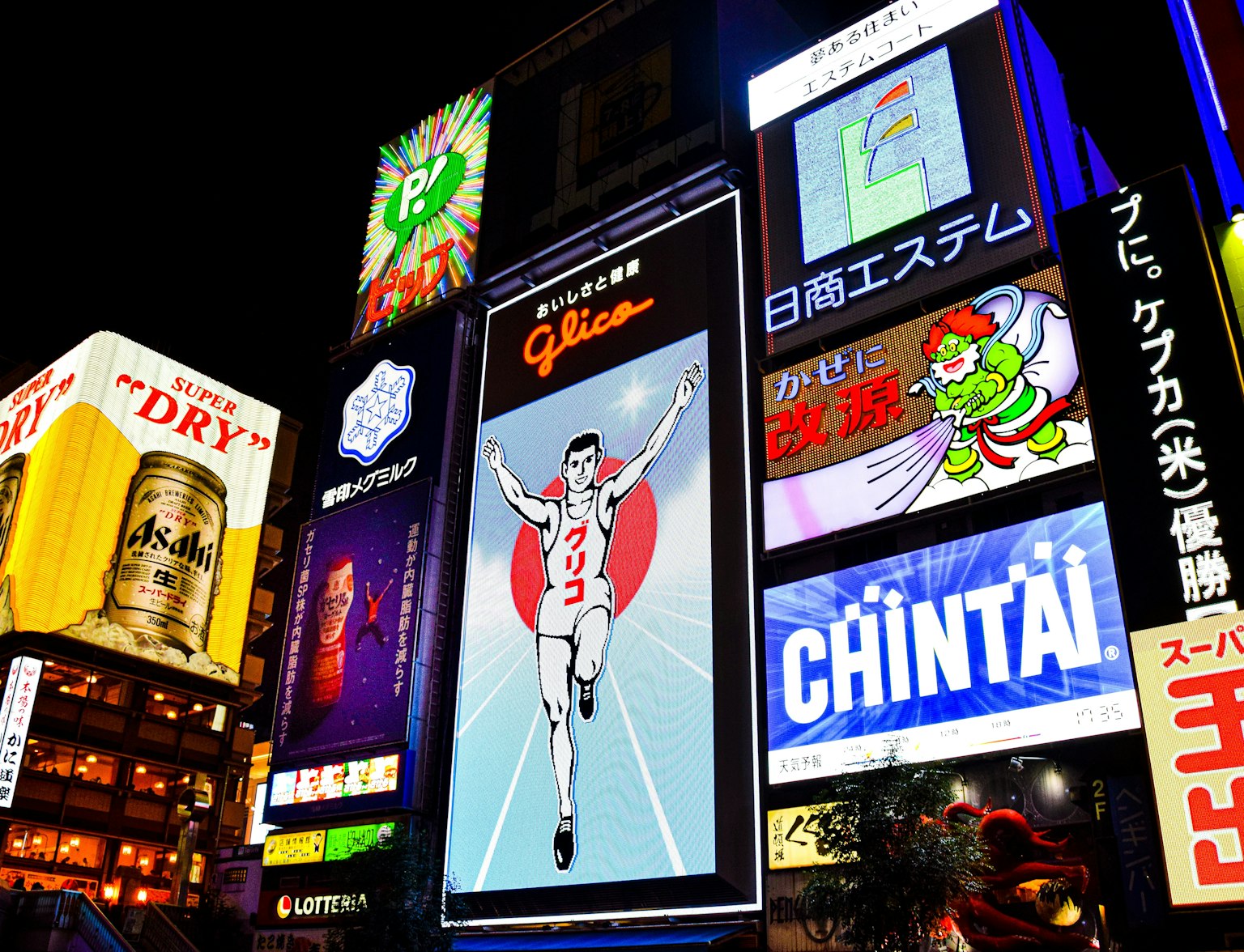
이 투어로 오사카를 탐험해보세요.
'사쿠라 스펙트럼'을 통한 수용 촉진

'사쿠라 스펙트럼'은 LGBTQ+ 커뮤니티의 상징일 뿐만 아니라, 더 나아가 이해와 수용을 촉진하는 도구로 작용한다. 이는 모든 사람들이 LGBTQ+ 커뮤니티의 아름다움과 다양성을 감상할 수 있도록 초대하며, 마치 사람들이 사쿠라 꽃의 매혹적인 배열을 감상하듯이 그 아름다움이 이해와 수용, 존중을 키울 수 있도록 한다.
결론
사쿠라 스펙트럼에 대한 탐구의 막이 내리면서, 우리는 일본 LGBTQ+ 커뮤니티의 다양성, 아름다움, 회복력에 대해 깊은 감사를 느낀다. 이 스펙트럼의 각 색은 투쟁과 성공, 그리고 보다 포용적인 사회를 위한 진전을 말하는 이야기를 담고 있다. 그러나 이야기는 계속 이어진다. 미래로 나아가면서, 사쿠라의 해마다의 만개처럼 더욱 포용적이고 생기있는 일본의 약속은 우리에게 희망을 안겨준다.
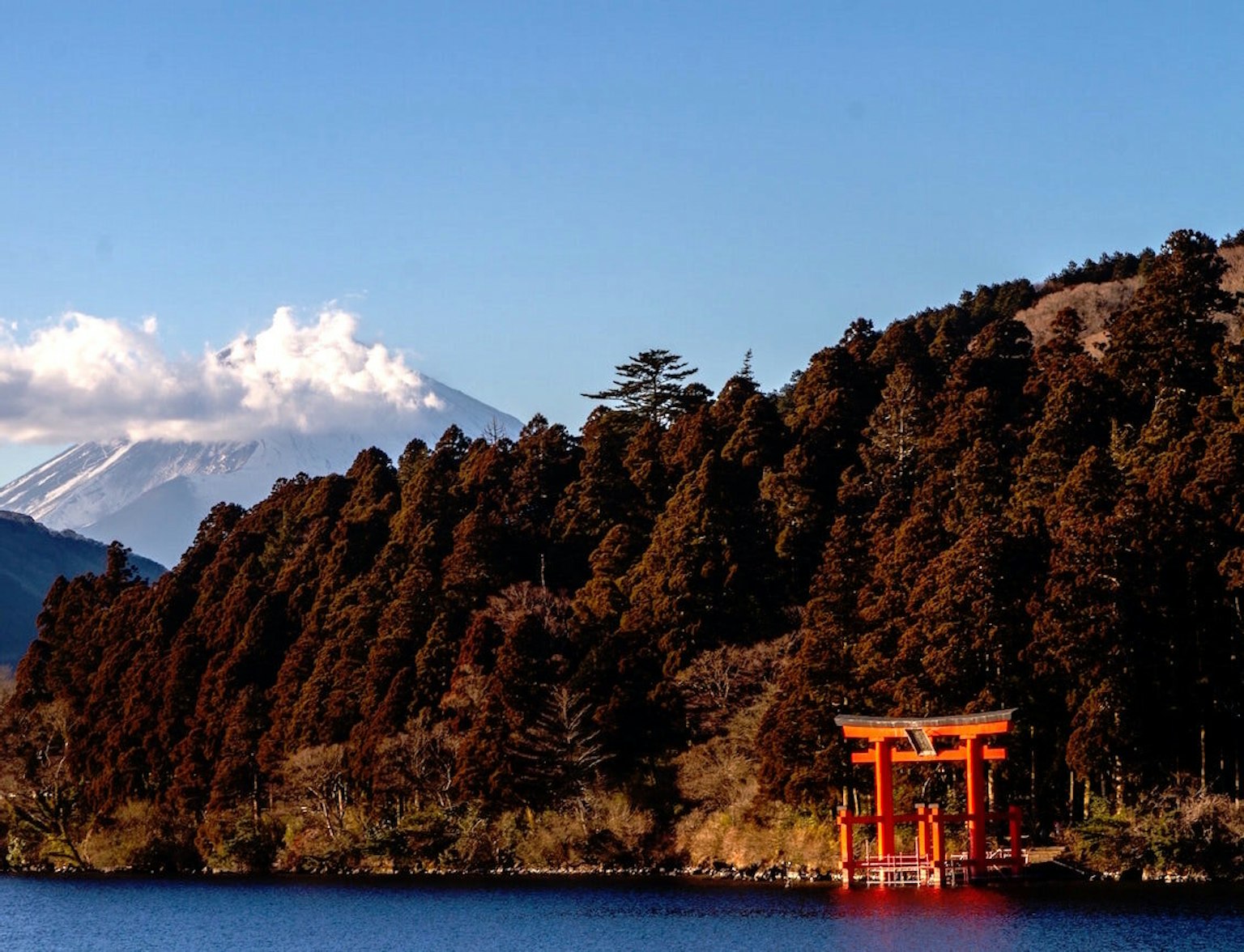
하코네의 숨막히는 아름다움을 발견하세요.
As we draw the curtain on our exploration of the 'Sakura Spectrum', we are left with a profound appreciation for the diversity, beauty, and resilience of the LGBTQ+ community in Japan. Each hue of this spectrum tells a story - of struggle, of triumph, and most importantly, of progress towards an inclusive society. Yet, the narrative continues to unfold. As we step into the future, the promise of a more accepting and vibrant Japan, much like the annual blooming of Sakura, fills us with hope.
You too can be part of this ongoing narrative. Whether you're an ally, a member of the LGBTQ+ community, or a curious traveller, we invite you to experience the vibrancy of Japan firsthand. At 'Trip to Japan', we offer a wide array of tours that allow you to immerse yourself in Japan's rich culture and traditions, and experience its modern evolution. Visit our website to find a journey that speaks to your heart, be it walking through the energetic streets of Tokyo Rainbow Pride, exploring the lively Ni-chōme district, or simply absorbing the rich history and beautiful landscapes of Japan. Book your tour today, and step into the captivating tale that is the 'Sakura Spectrum'.



